Gettysburg National Military Park in Pennsylvania
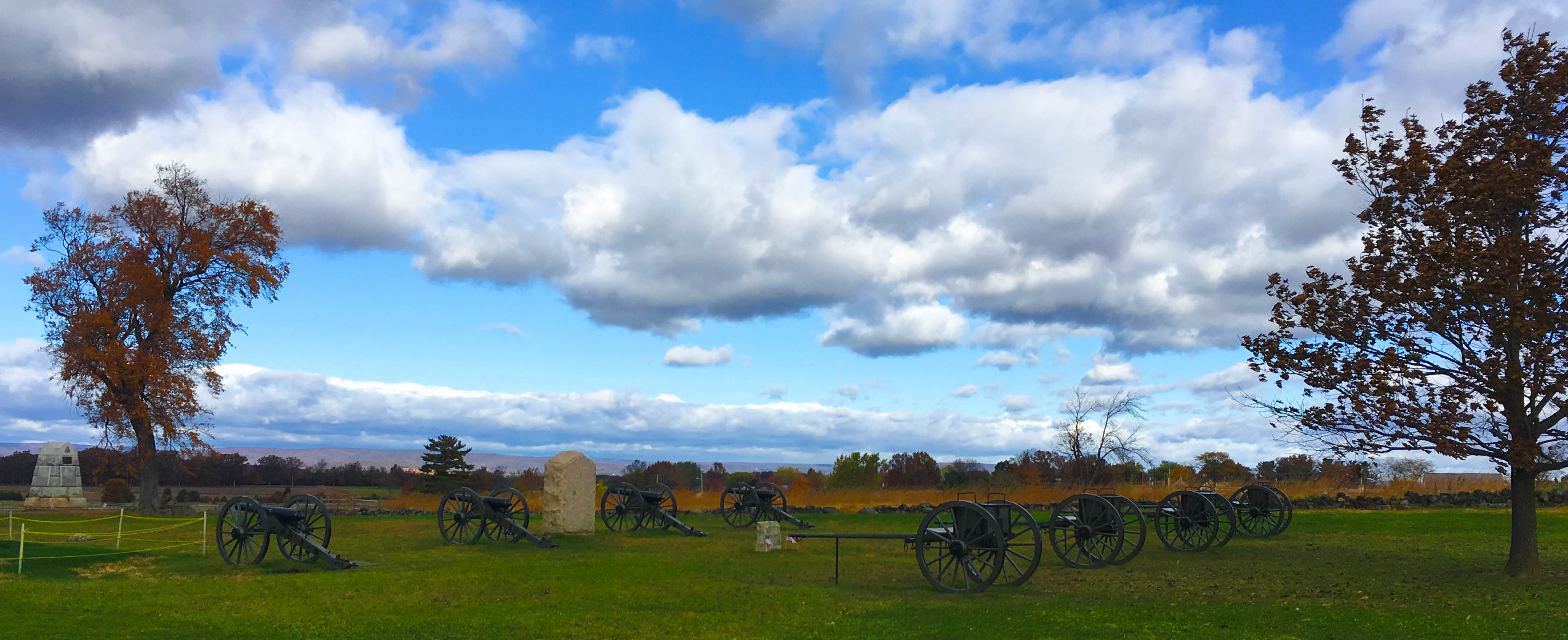
“A body would think the whole south had broke loose and are coming into Pa.” Rachel Cormony wrote in her diary on June 27, 1863. “It makes me feel too badly to see so many men and cannon going through knowing that they have come to kill our men.”
Mrs. Cormony worried most about her own husband Samuel, a Second Lieutenant in the 16th Pennsylvania Cavalry. The two had met when he lived in a boarding house that her family ran to finance her education at Otterbein University in Westerville, Ohio. Now he served in the Union Army, and she cared for their baby Mary Cora in Chambersburg, a Pennsylvania borough through which Confederate General Robert E. Lee marched his army on the way to Gettysburg. A week later she wrote, “I imagined that I could already see My Samuel falling. I feel very uneasy about him.”
She had good reason for concern. Two months earlier, the Confederacy had won the Battle of Chancellorsvile, a six-day fight and the main engagement of the Chancellorsville Campaign, which resulted in more than 30,000 casualties and losses. Riding high on victory, Gen. Lee decided to invade the Union. He hoped to give war-torn Virginia a break while damaging Union morale and diminishing popular and political support for the War in North. And so he marched his Army into Pennsylvania. In conflict with his orders, Confederate soldiers looted local stores. “Some of our merchants will be almost if not entirely ruined,” Mrs. Cormony wrote on June 24.
Even more horrifically, they rounded up black Americans, possibly more than 1,000, and sent them South via a kind of reverse Underground Railroad, a network of slavers who deemed them “contraband” that should be “returned” to their “owners”. Rachel Cormony writes:
All seemed quiet yet. We almost came to the conclusion that the reb’s had left again leaving only a small guard who took things quite leasurely. Soon however they became quite active. Were hunting up the contrabands & driving them off by the droves. O! How it grated on our hearts to have to sit quietly & look at such brutal deeds–I saw no men among the contrabands–all women & children. Some of the colored people who were raised here were taken along–I sat on the front step as they were driven by just like we would drive cattle. Some laughed & seemed not to care–but nearly all hung their heads. One woman was pleading wonderfully with her driver for her children–but all the sympathy she received from him was a rough ‘March along’–at which she would quicken her pace again. It is a query what they want with those little babies–whole families were taken.
A lot was at stake when the Union and Confederate armies met on July 1. Fierce fighting raged for two days. The decisive engagement was Pickett’s Charge on July 3, named after Major General George Pickett, one of three Confederate generals leading the attack under Lieutenant General James Longstreet. The Confederates first lobbed massive cannon fire into the Union defense. Then approximately 12,000 Infantrymen began to march the better part of a mile across open fields. They were decisively repulsed by Union cannon and rifle fire, with nearly 9,000 casualties and losses, in contrast with the Union’s 1,500.
I visited the site of Pickett’s Charge at Gettysburg National Military Park on a peaceful breezy day in early November.
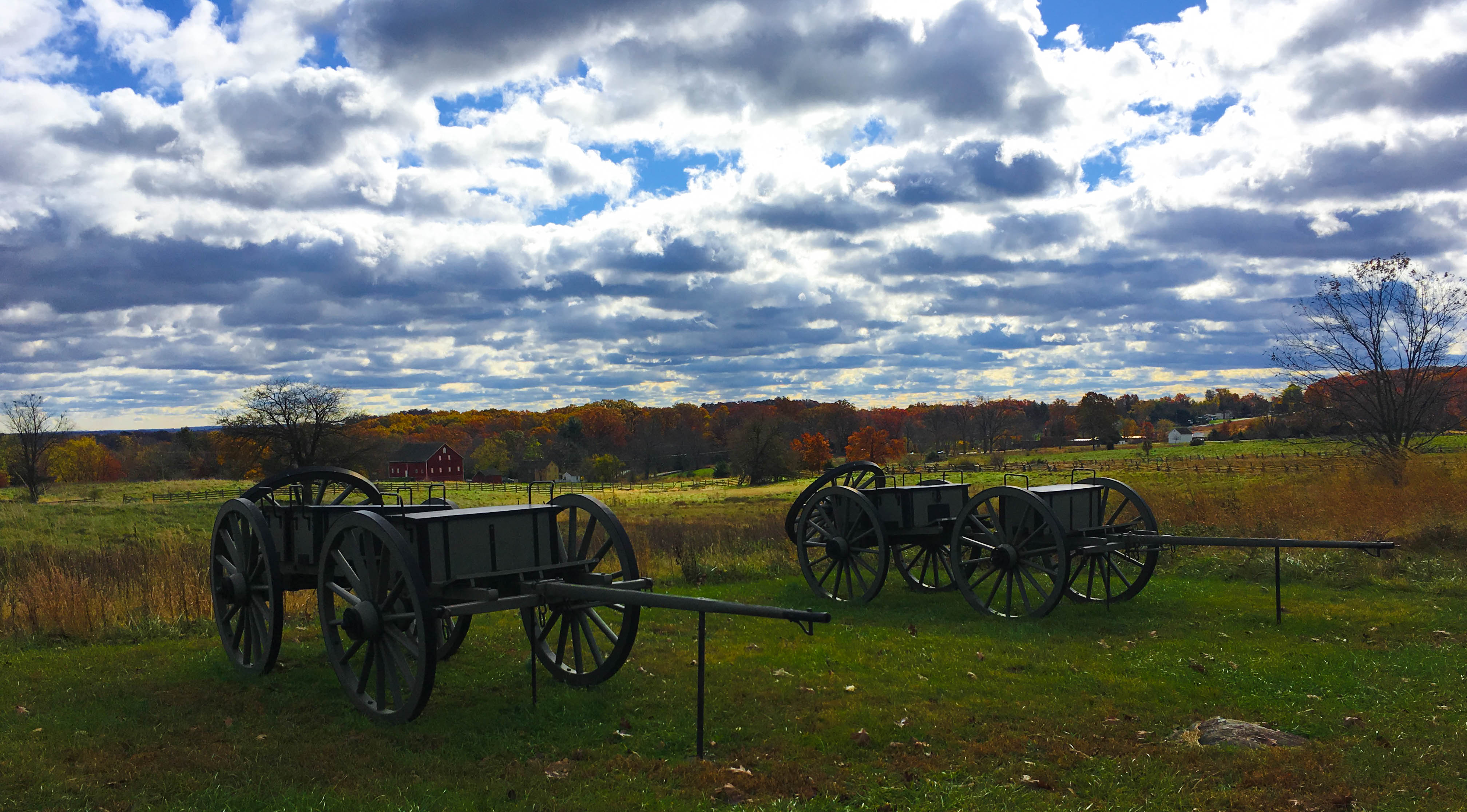
Memorials and markers dot the open landscape.
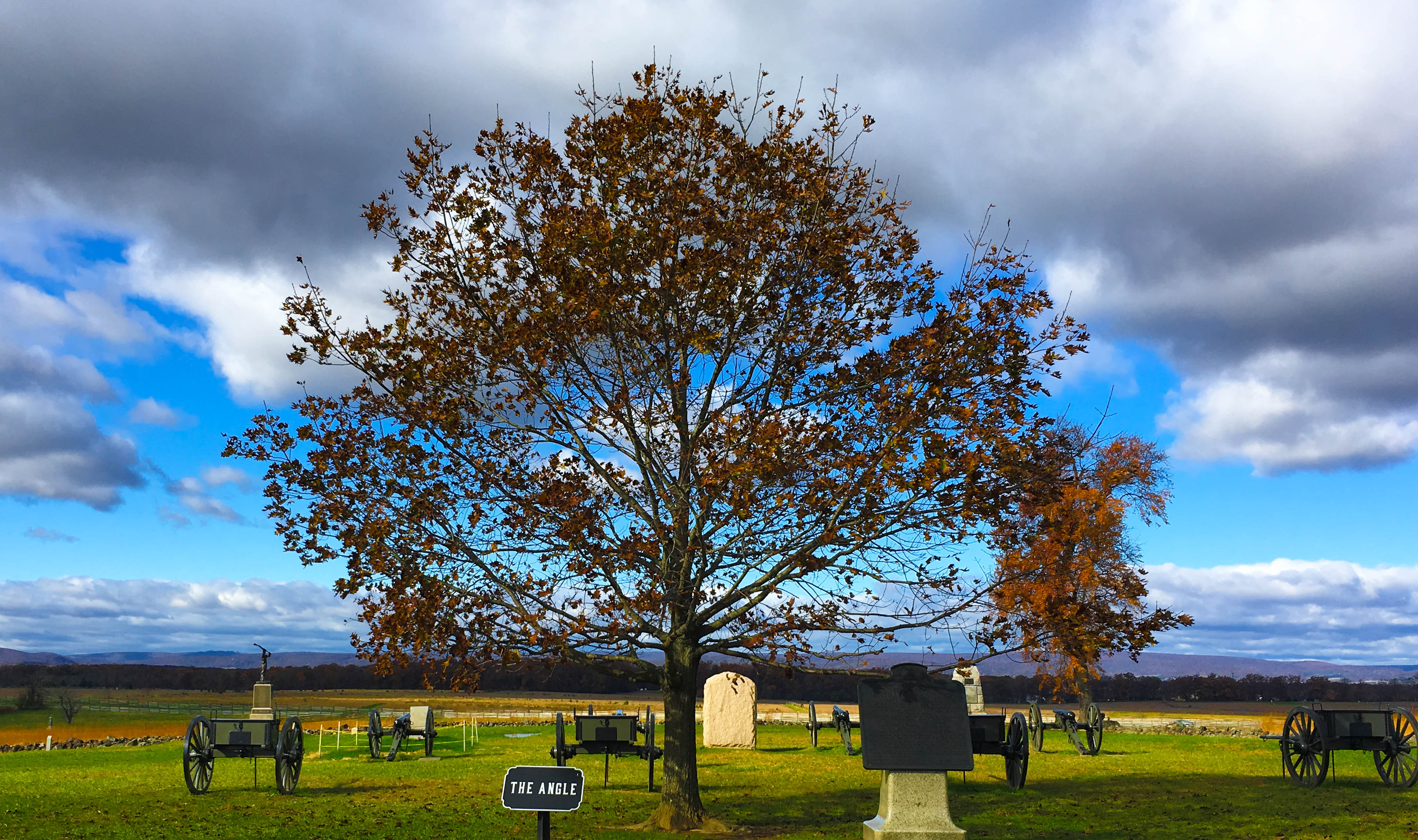
Trees just past peak proclaimed the poignancy of inevitable change, and loss, and sorrow, but the hope of renewal as well.
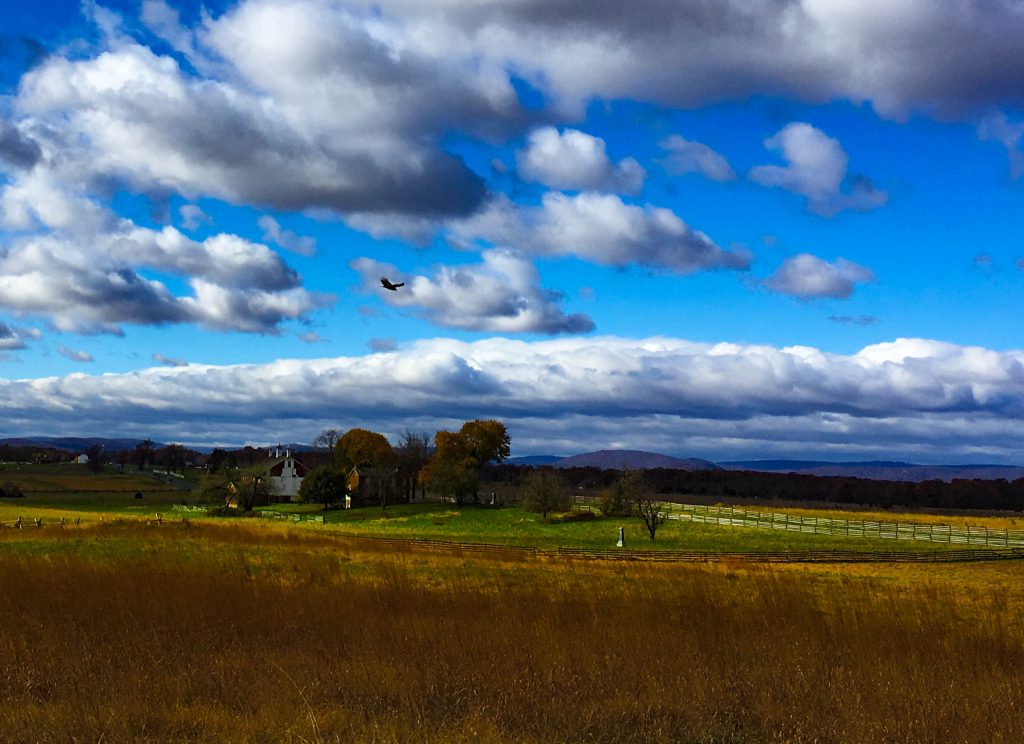
A lone black hawk soared and swooped above, oblivious to the significance below.

The spot is called the High Water Mark, the furthest point reached by the Confederate Army and the turning point of the Civil War. In the early morning hours of July 4, Gen. Lee’s demoralized Army retreated back to Virginia. The Battle of Gettysburg was over; the Confederacy would never recover.
Samuel Cormany arrived home on July 6. His wife wrote, “Mr. Cormany just rode up. I was so very glad to see him that I scarcely knew how to act. He was very dirty and sweaty so he took a bath and changed clothes.” He soon returned to a war that continued nearly two more years.
From the High Water Mark, I walked to the Gettysburg National Cemetery, where rest more than 6,000 casualties and veterans from the Civil and later wars.
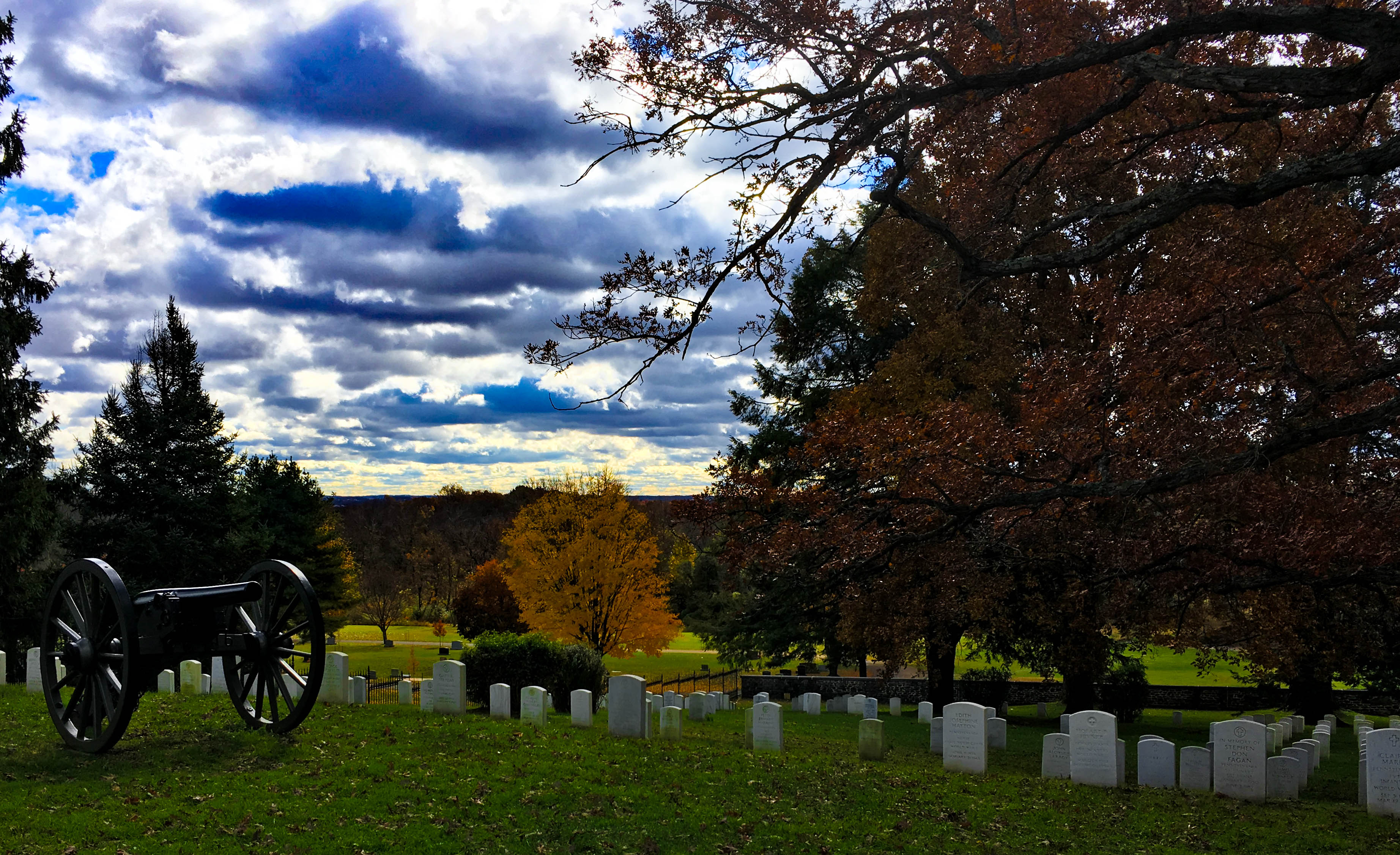
It was dedicated 14 score and 15 years ago this November 19, with President Abraham Lincoln’s masterpiece Address, concluding:
[I]n a larger sense, we can not dedicate–we can not consecrate–we can not hallow–this ground. The brave men, living and dead, who struggled here, have consecrated it, far above our poor power to add or detract. The world will little note, nor long remember what we say here, but it can never forget what they did here. It is for us the living, rather, to be dedicated here to the unfinished work which they who fought here have thus far so nobly advanced. It is rather for us to be here dedicated to the great task remaining before us–that from these honored dead we take increased devotion to that cause for which they gave the last full measure of devotion–that we here highly resolve that these dead shall not have died in vain–that this nation, under God, shall have a new birth of freedom–and that government of the people, by the people, for the people, shall not perish from the earth.
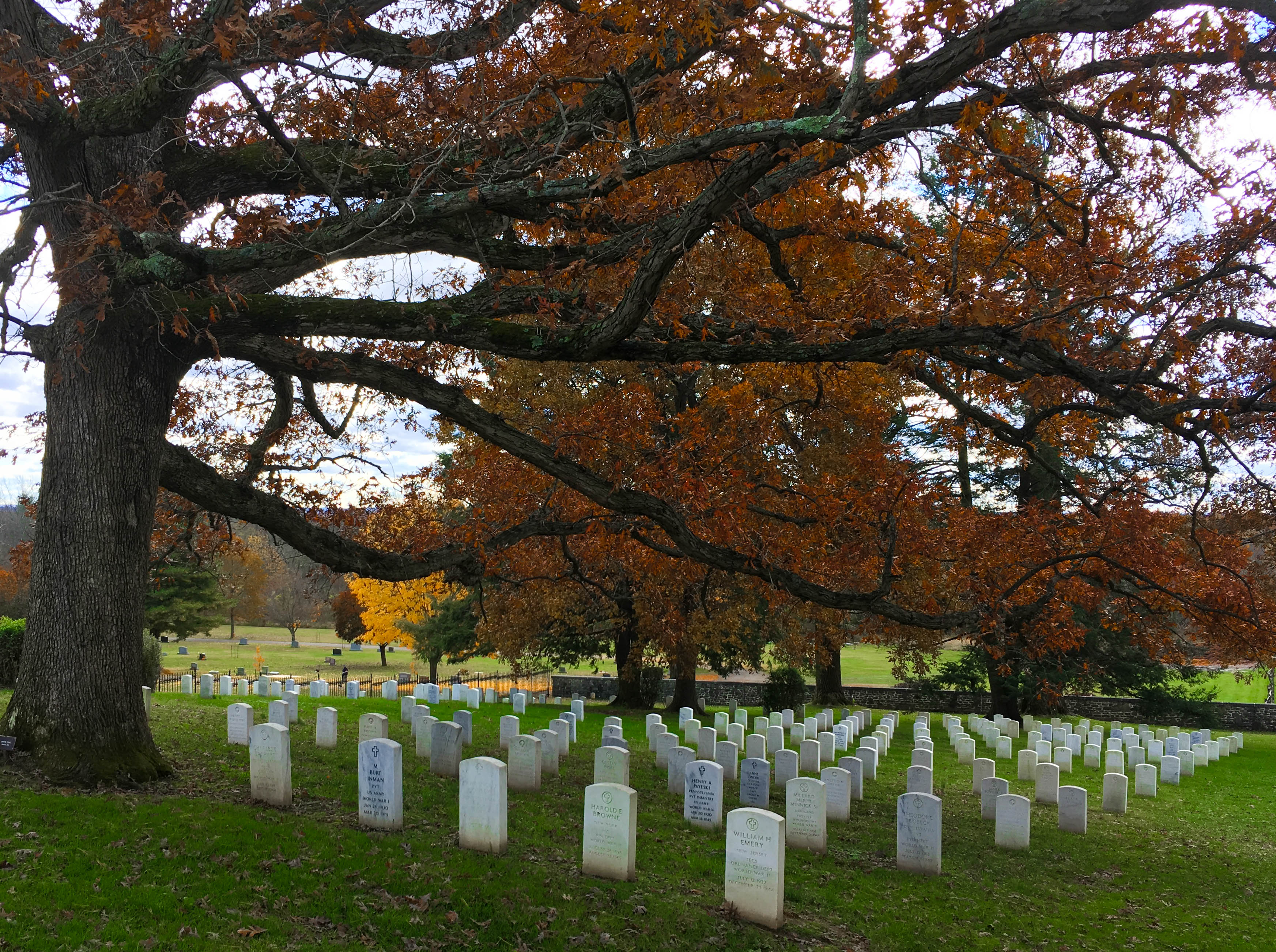
The Battle of Gettysburg totalled more than 50,000 casualties and losses. It would remain the bloodiest battle in American history until D-Day, and one of the most consequential. It set the Union squarely on the path to victory. The Civil War ended race-based chattel slavery in America. It also consolidated the power of the national government.
Samuel Cormany’s regiment was at Appomattox Court House when Gen. Lee surrendered in April 1865. His family finally reunited on August 27. They moved from Pennsylvania to Missouri and then Kansas. In 1878, they settled in Michigan, where he began small businesses to finance their daughter’s education. In 1880, Mary Cora went off to Otterbein University.
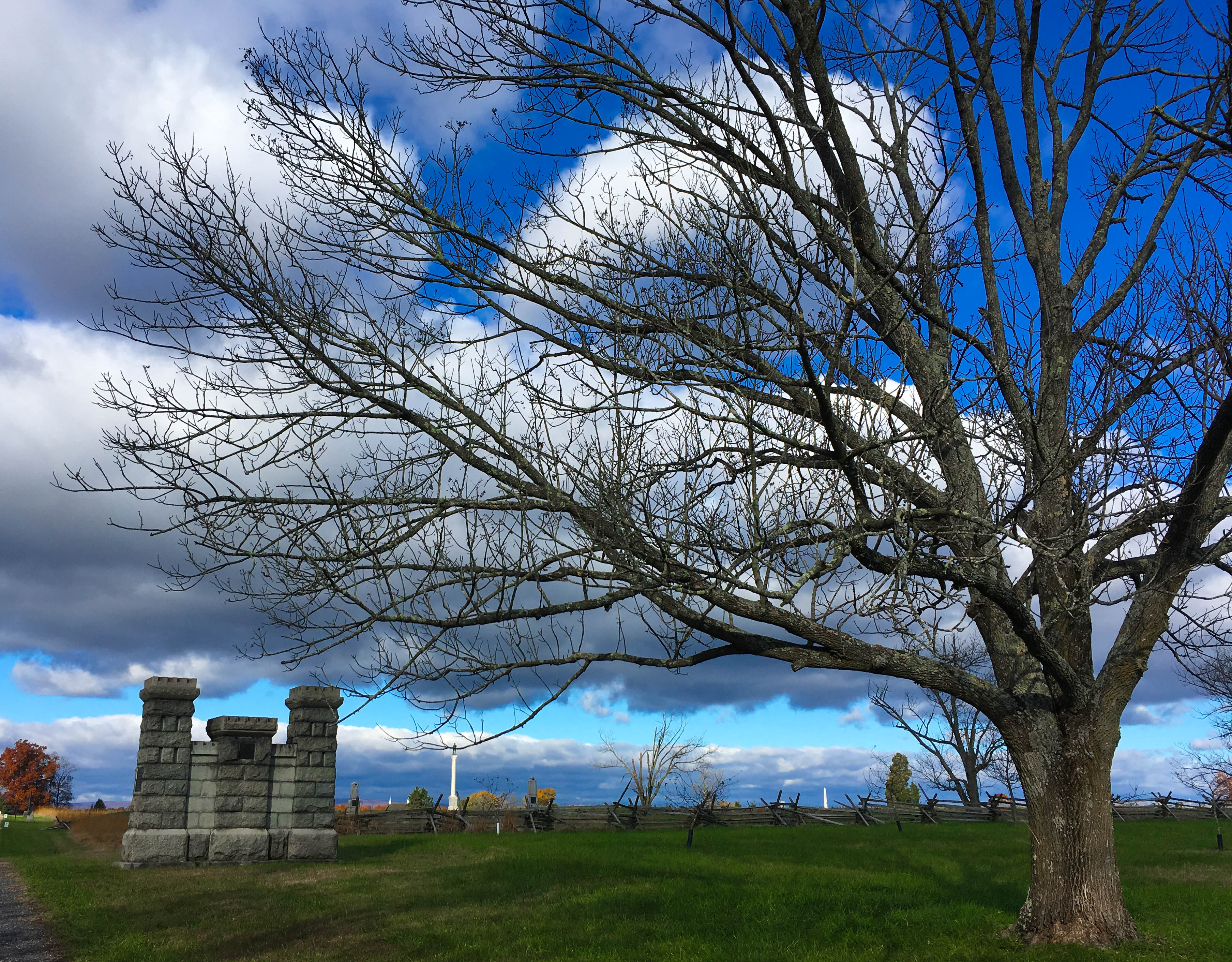
This post contains affiliate links. For more information, click here.
What to Know Before You Go to Gettysburg National Military Park
Gettysburg National Military Park is located at 1195 Baltimore Pike. Entrance and parking are free. The Park opens daily at 6 a.m. and closes at 7 p.m. during November-March and at 10 p.m. during April-October. The Visitor Center is open 9-5 during November-March and 8-6 during April-October; it is closed on Thanksgiving, Christmas, and New Years’s Day and closes at 2 p.m. on Christmas Eve.
How to Get to Gettysburg
The closest airport is Harrisburg International, about 35 miles north of Gettysburg. From the mid-Atlantic region, it is a very pleasant drive past small Craftsman homes behind big shady trees.
What to Wear at Gettysburg
Comfortable shoes and socks. The terrain at Gettysburg is flat and open and easy to walk. I was fine in my Superga sneakers.
Layers. Northeast weather is hot in the summer, cold in the winter, and always unpredictable. Dress for the expected weather and your preferences, and pack a lightweight windbreaker.
What to Bring to Gettysburg
Snacks, if you plan to make a day of it.
Camera. The scenery at Gettysburg is beautiful. I took the photos in this post with my iPhone. But Gettysburg is one park where my DSLR and even tripod would have been manageable, thanks to the flat terrain and small crowds.
What to do at Gettysburg
Start at the Visitor Center. Here you can pick up maps and get your bearings. For basic context, there is a “Film, Cyclorama, and Museum Experience” for a standard ticket price of $15 per adult and $10 per child over age five. The film is “A New Birth of Freedom”, which explains the significance of the Battle of Gettysburg in American history. The Gettysburg Cyclorama is a 360-degree oil-on-canvas depiction of Pickett’s Charge; it weighs 12.5 tons and spans 377 x 42 feet. The Gettysburg Museum of the American Civil War features 12 galleries of displays covering the Civil War and its causes. After getting your bearings at the Visitor Center, you have several ways to explore the Park, including hiking, following the self-driving auto tour, or taking a private or group tour by car, bus, or even horseback or carriage.

Where to Eat at Gettysburg
There are two designated picnic areas at Gettysburg National Military Park. The Visitor Center offers snacks at the casual Battlefield Cafe and lunch at the period Refreshment Saloon. Gettysburg’s historic downtown area offers several themed or chain restaurants among the tourist inns and kitsch-tory shops.
To learn more about the Civil War, the New York Times suggests this reading list.
Planning national parks travel? You might enjoy:

After my misspent youth as a wage worker, I’m having so much more fun as a blogger, helping other discerning travellers plan fun and fascinating journeys. Read more …
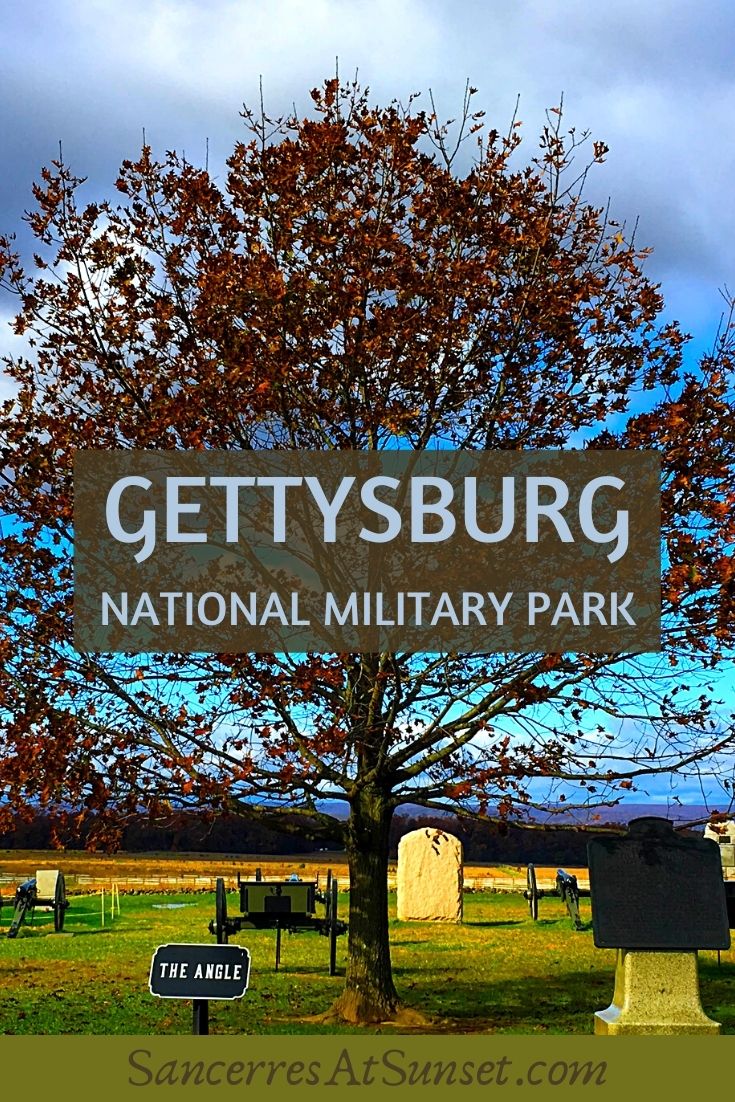
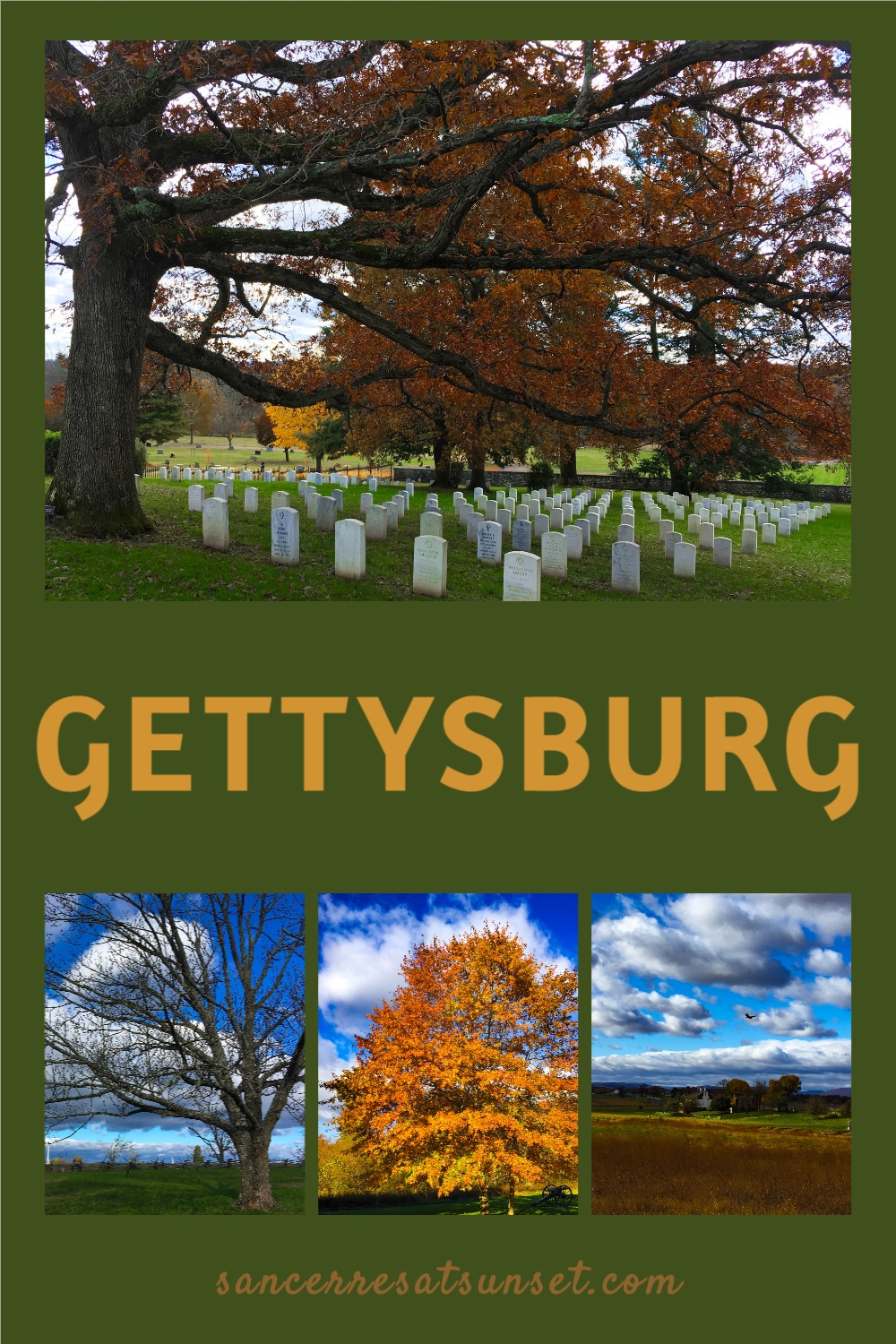
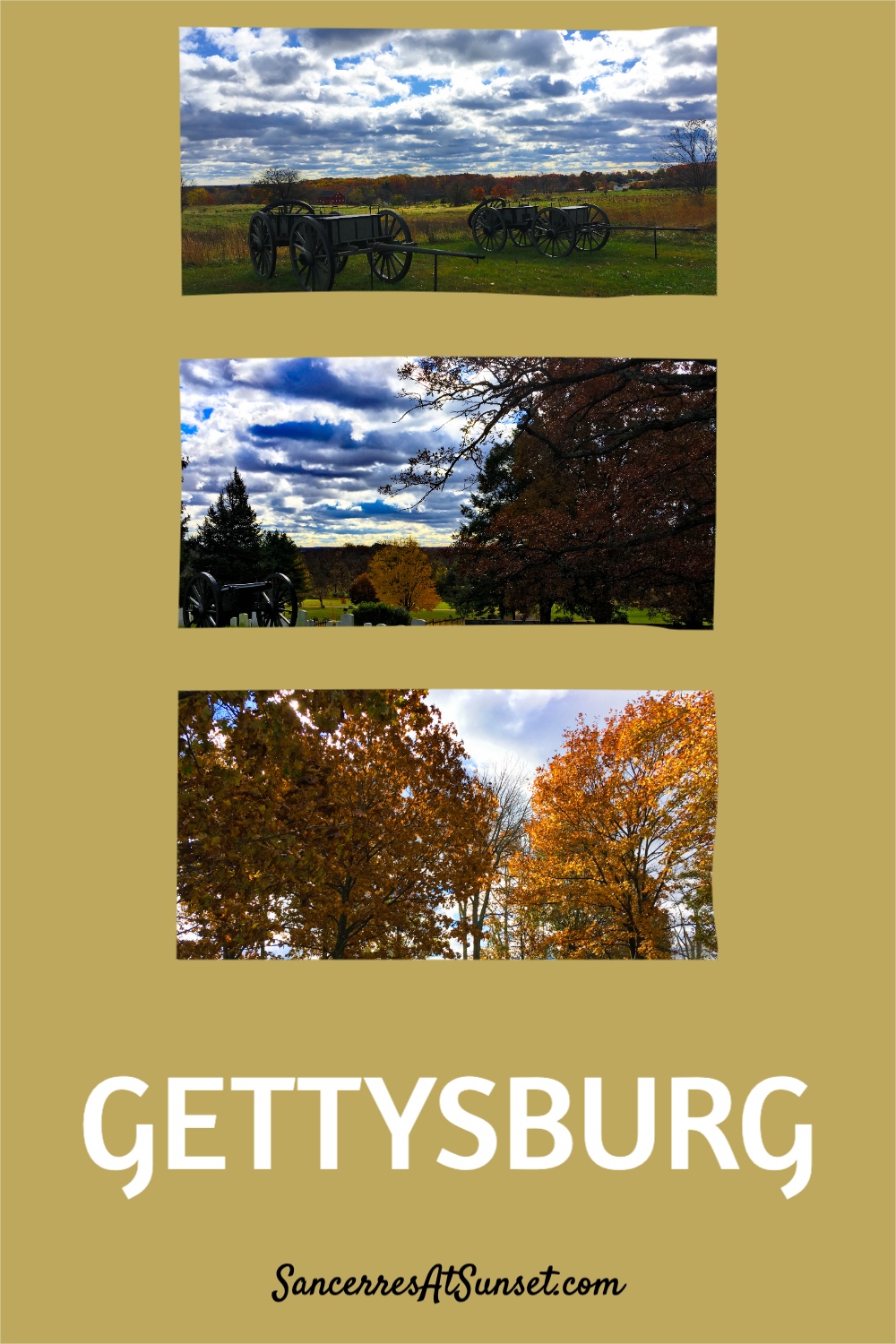
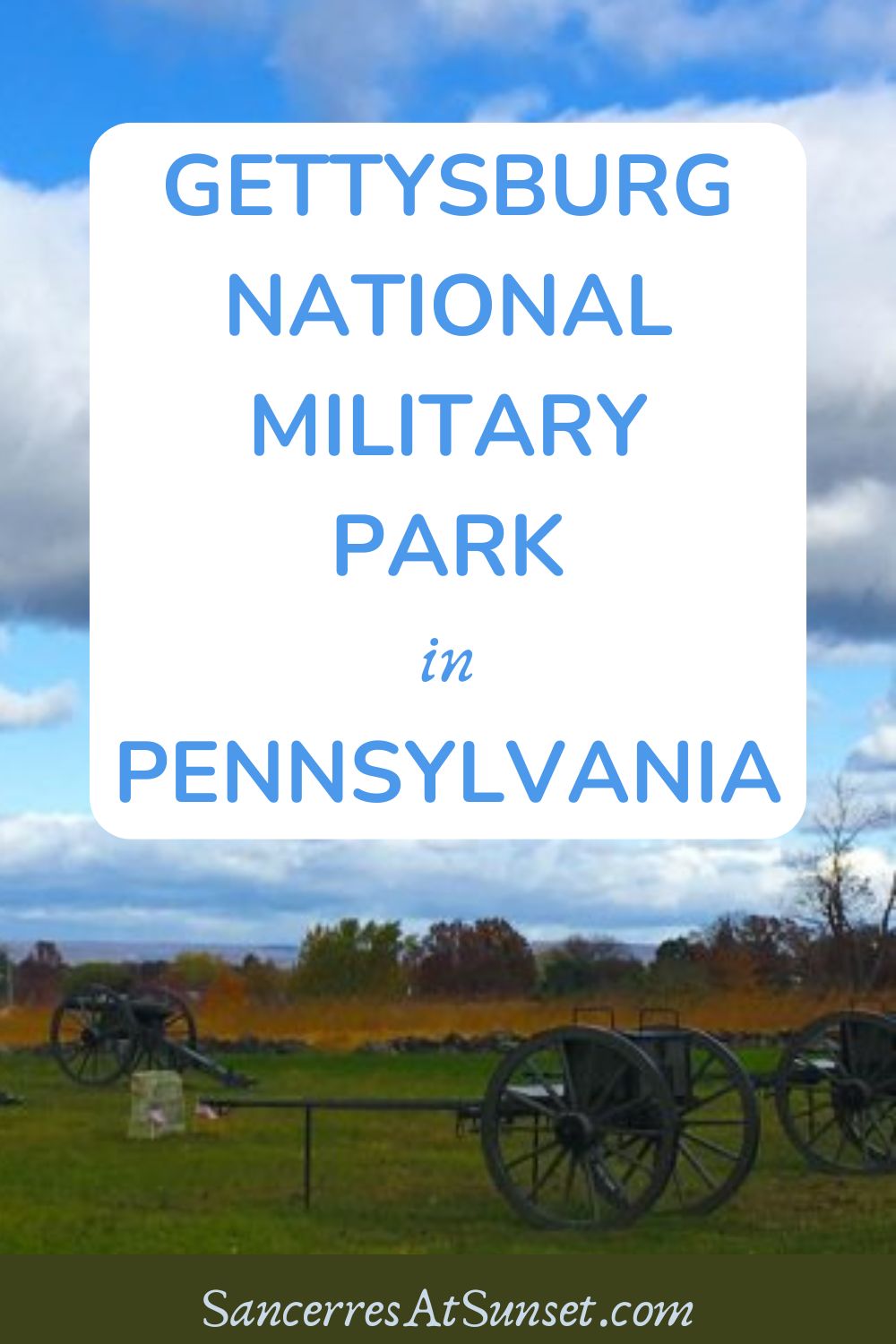

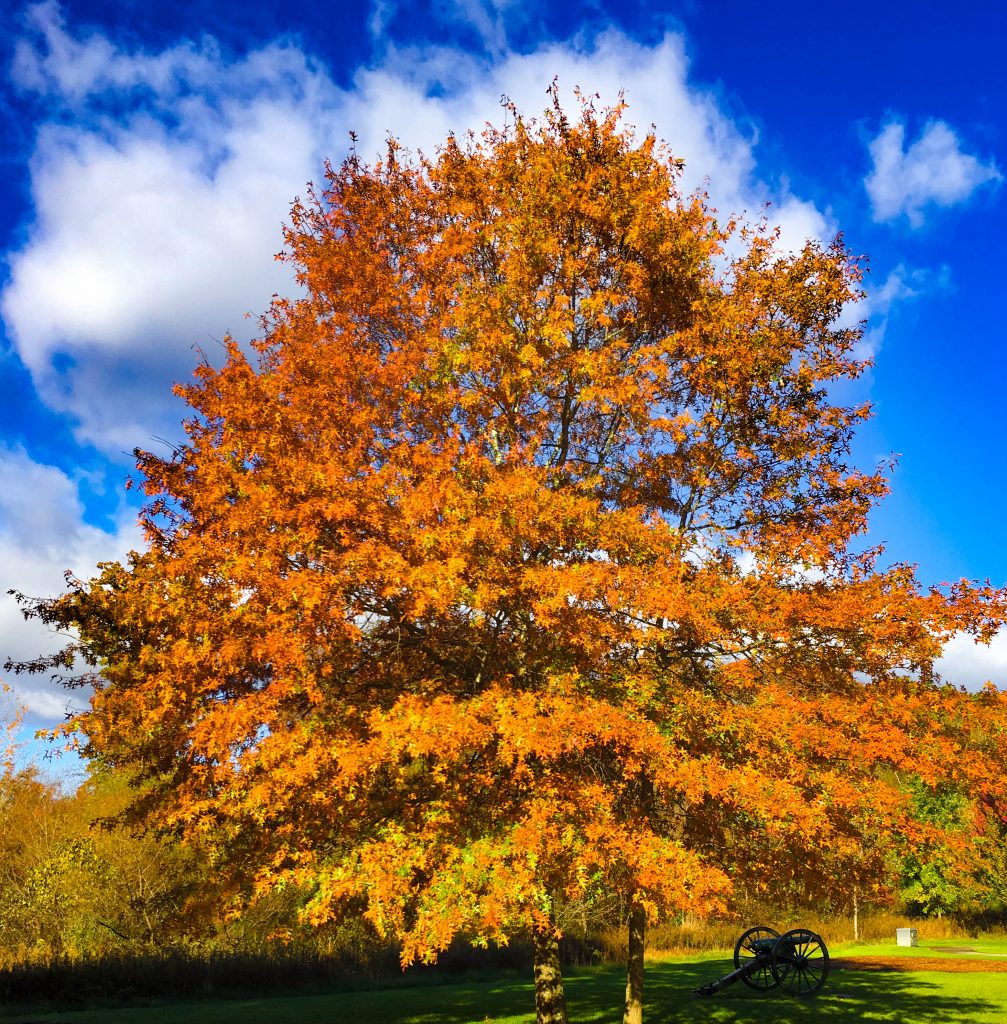
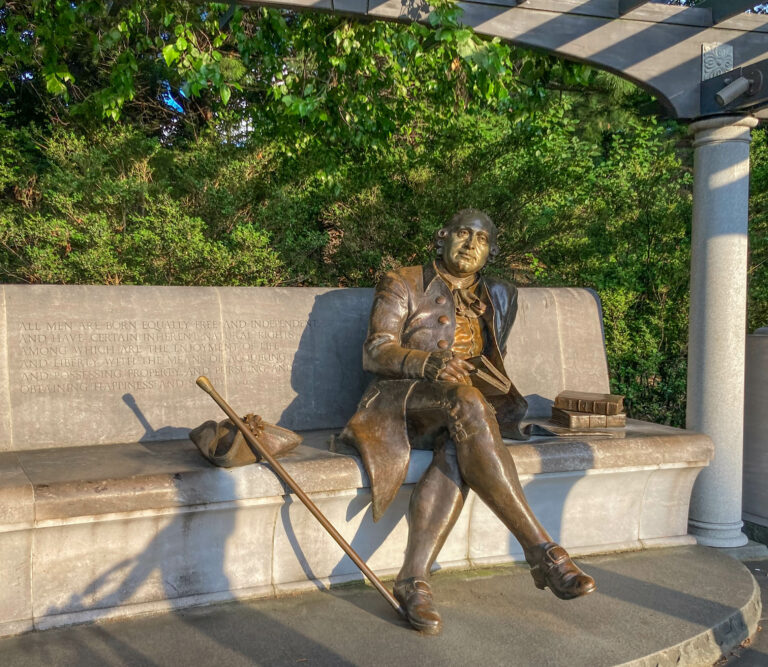

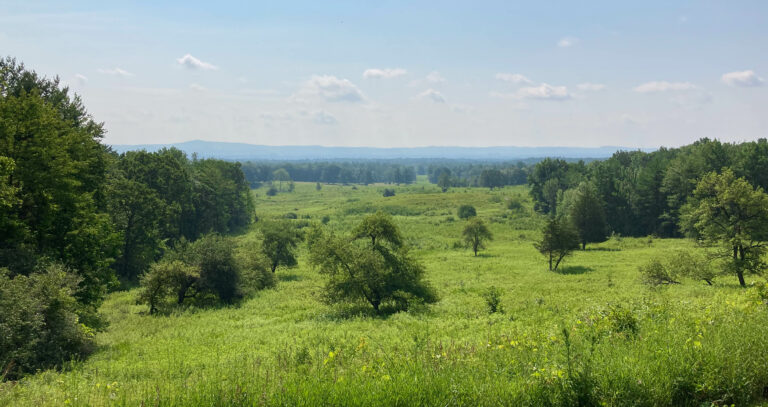
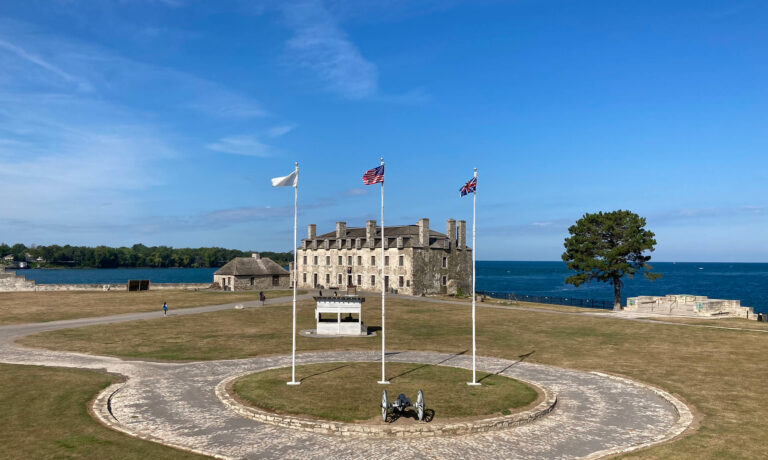
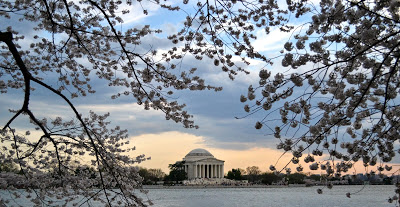
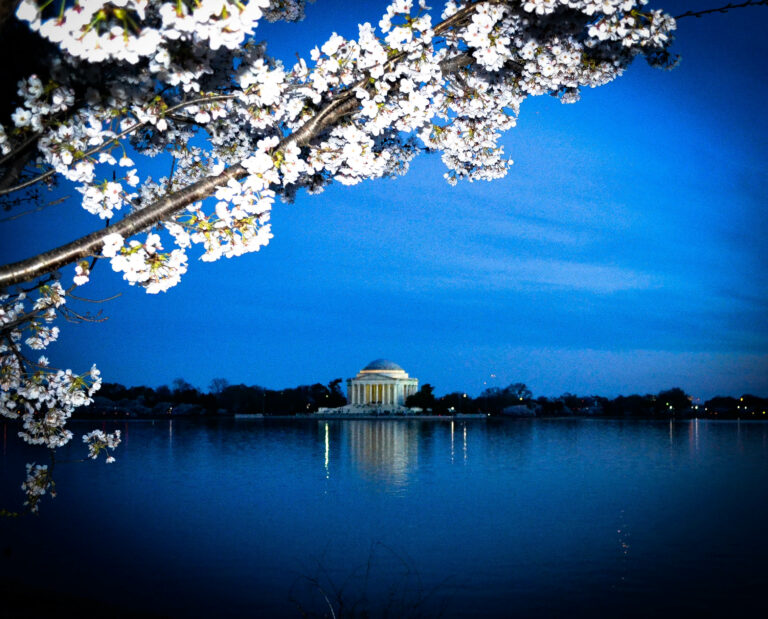
That’s very interesting! We were close to there a few months back but didn’t have time to stop. I think it’s worth a trip for us. I like the actual words of Mrs. Cormony and Abraham Lincoln. Thanks for all the great information!
This was a very informative blog. I enjoyed reading the story as history is amazing. The photos are beautiful and sad as I think about what happened there. I appreciated the tips about what to bring and the visitor center.